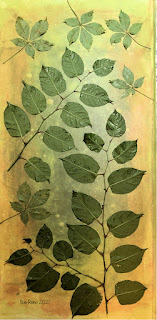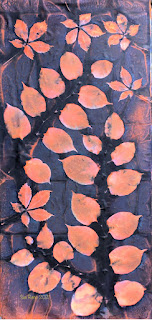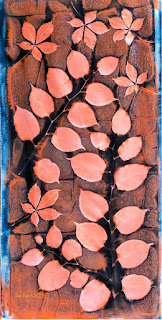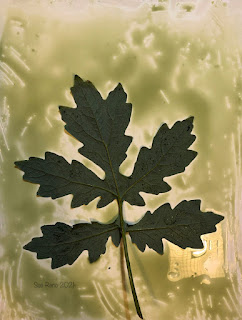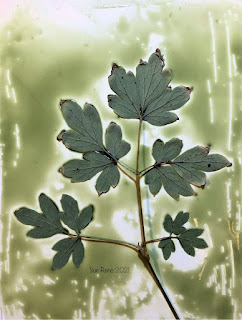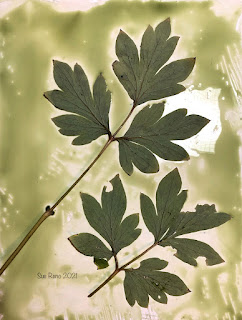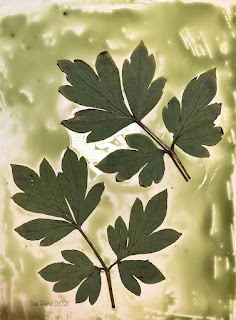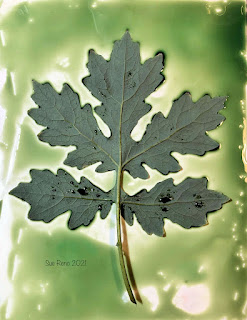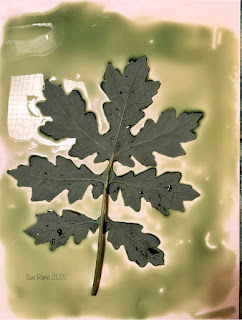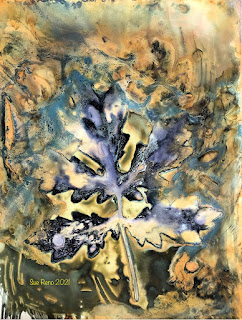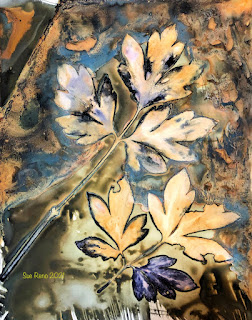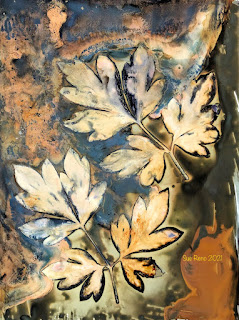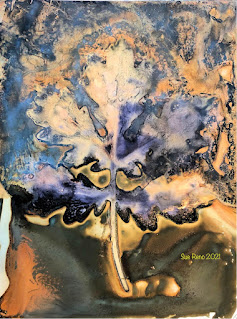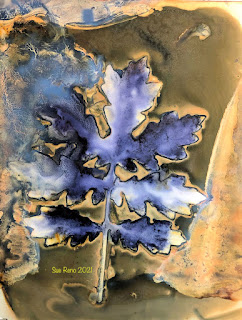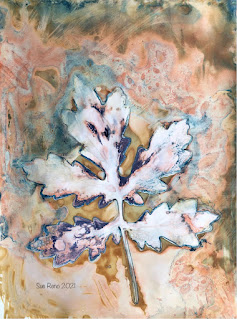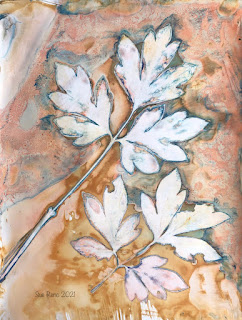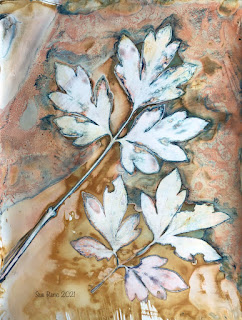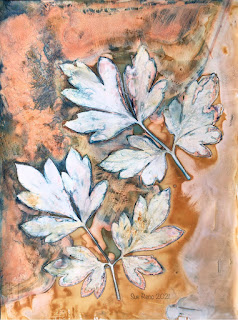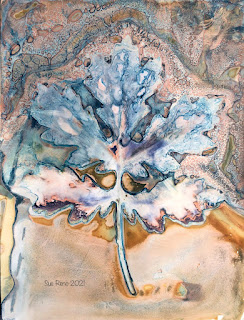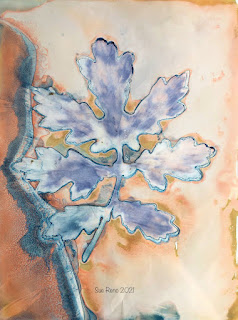Time for another big panel, about 24" x 48", on my favorite cotton sateen. The big leaves are the dreaded Japanese knotweed and the smaller compound leaves are native Virginia creeper, so it's a study in contrast on multiple levels. I used a combination of cyanotype chemicals with just a small glug of Solarfast solar dye. The first image is just before exposure. The next one is after it sat in the hot sun all afternoon, but pre-rinse.
Here's the result. For as long as I've been doing this, you'd think I would not be surprised by the outcome, but this one behaved in new-to-me ways as the chemicals and colors moved around. I have a long, long queue of prints waiting for my attention, to be made into art quilts, but this one may jump the line a bit as I am entranced by it.
Thanks for reading, and a reminder that you can follow along on your platform of choice:
Facebook page:http://www.facebook.com/suerenostudioTwitter feed: http://twitter.com/suereno
Tumblr: http://suerenostudio.tumblr.com
Instagram: https://www.instagram.com/sue_reno_studio/
